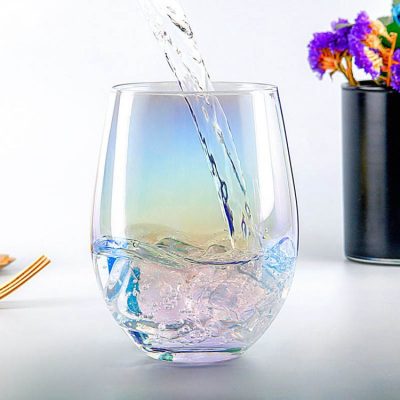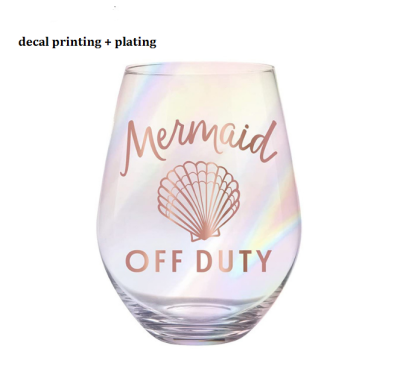What is the evolutionary history of wine glasses?
At the beginning, wine glasses were generally made of wood, tin or other opaque materials, and were changed to glass textures, which were just for show at the beginning. However, under the candlelight, the mellow wine in the cup is really intoxicating. Later, lead was added to the glass to make a crystal cup, which was not only pleasing to the eye but also pleasing to the eye.
In the 18th century, the round-bottomed necked glass was created. The delicate and elegant appearance made the European aristocrats flock to them.
The original glass wine glasses were carved and gilded, which was impractical. Paying attention to function seems to be something that only started at the beginning of the last century. However, there are exceptions – the engraving on the glass of the Riesling wine produced in the German Moselle is to increase the refraction and make the golden wine more crystallized; and the Alsatian wine glass has a long and green neck, which is also to set off the wine. colour.
The so-called crystal products are usually leaded glass. In the 17th century, English glass factories added lead oxide to glass in order to lower the melting point, resulting in transparent, high-refractive crystal glass with a sense of weight. Full lead crystal (fullleadCrystal) is the most beautiful in the glass, with a diamond-like luster. The name of crystal products is only allowed to be used for products containing more than 30% lead. The lead crystal in Europe generally refers to products containing more than 24% lead oxide, but Japan does not comply with such regulations.
Usually when “crystal” is said, it does not indicate how much lead content, so ask clearly when purchasing. The price difference between full lead crystal and pure crystal may be dozens of times.
A good wine vessel needs careful care to keep it in good condition, which helps to enhance the pleasure of appreciating fine wines, otherwise it affects the real wine quality of fine wines.
The so-called optimal state is odorless, dust-free, and watermark-free.
“Paper-thin, sound like a chime” crystal wine glasses are easily damaged, so be careful when cleaning them.
It should be cleaned separately, not with ceramic utensils, and it is strictly forbidden to put it in one place with metal utensils (such as cutlery and fork).
The cup is thinner at the mouth and neck of the cup, and the cup bowl and bottom are thicker, so when washing the cup, you should hold the cup and bowl in the palm of your hand, and stick a sponge with a handle into the cup to wipe lightly.
The wine glass should not be too greasy, just use a small amount of neutral detergent and rinse it with warm water. If the detergent remains on the glass, it will not only affect the taste, but also hinder the formation of bubbles in sparkling wine and champagne.
After rinsing with hot water, turn the glass upside down and drain. It’s best not to dry with a cloth to avoid leaving odors or fibers from old rags in the cup.
When storing glass wine glasses, you should avoid direct sunlight, otherwise it will affect the tension of the glass.
The wine glasses stored in the kitchen cabinet for a long time are easy to be stained with the smell of the cabinet or wood. It is better to rinse them with water before use.
The wine glass used for the first time should be cleaned with vinegar or lemon juice before use, so as to be worthy of the jade agar in the glass.
What is the evolutionary history of wine glasses? After reading this article, you should know something. In fact, it is a very happy thing to like to drink wine. After a busy day, calm down and drink a glass of wine and then go to sleep, which can relax our tired body after a day.

















